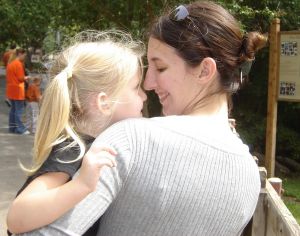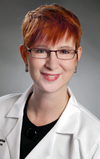Women, Kickoff Your Heart Health
 We are living in a great time of medical advances. They have increased our life expectancy by 10 years—and cardiovascular advances account for seven of the 10 years. Despite these gains, cardiovascular disease (CVD) remains the largest killer of Americans and individuals worldwide. In absolute numbers: more women than men die on an annual basis because of this disease and this includes the United States.
We are living in a great time of medical advances. They have increased our life expectancy by 10 years—and cardiovascular advances account for seven of the 10 years. Despite these gains, cardiovascular disease (CVD) remains the largest killer of Americans and individuals worldwide. In absolute numbers: more women than men die on an annual basis because of this disease and this includes the United States.
The disparity in women’s cardiovascular health is of particular concern. We are only beginning to understand the disease process because of gender-specific research conducted in the last 15 years. Prior to the 1990s, women were not actively recruited for research studies because of concerns over exposing women to unnecessary risk. As a consequence researchers concluded, though incorrectly, CVD was a “man’s disease.”
As gender-specific research has evolved, we have learned about differences in the pathophysiology, natural history and clinical manifestations of the disease. We have learned there are differences in the strength and prevalence of risk factors between men and women. But we are only in the infancy of our knowledge. We need more studies to bridge the gap that currently exists.
Acknowledging this limitation, the American Heart Association (AHA) has taken an active role in the battle against CVD. Reducing death rates requires more than medical advances, it requires prevention. When the initial survey conducted by AHA in 1997 asked women what was their greatest medical risk, only 13 percent answered CVD. Prevention begins with awareness of risk. In the 2005 AHA survey, overall awareness of heart disease risk factors in women had improved substantially, but there remained significant underestimation of personal cardiovascular risk by women and confusion about how to lower risk.
The lifetime risk for the development of CVD in a 50-year-old woman with no risk factors (blood pressure 120/80, total cholesterol <180, nonsmoker and no DM) is 8 percent. This same woman’s lifetime risk of disease with two risk factors (slightly high blood pressure and mildly elevated cholesterol) jumps to 50 percent. We cannot wait until clinical disease manifests as a stroke or heart attack to treat risk factors. We cannot wait until the age of 50 to begin. We must instill in our children at a young age habits that include regular exercise and eating healthy in order to have an impact on disease outcomes.
Disease prevention is challenging. We are a nation of more: “super-sized” meals, jumbo drinks and abounding sweets. We are seeing the consequences of our collective behavior in the form of chronic obesity and its related illnesses. This is a medical emergency; it just doesn’t look like one. Changing lifelong habits for the better can only be accomplished one individual at a time, one day at a time.
Technology has revolutionized the way we live and our behaviors have followed suit. Convenience is our motto. The rise of packaged foods has brought about dramatic changes to the way many of us eat. We no longer need to plan meals, let alone cook.
This is a problem.
Many of us struggle with weight as we mature. Consuming an extra 25 calories per day sounds insignificant, yet over a year’s time this behavior leads to three pounds of weight gain. Over 10 years, this becomes 30 pounds, and over 30 years, 90 pounds.
It is easy to walk down the road of self-destruction, whether by choice or neglect. We must end our denial. Growing older in better health, with less disease, fewer drugs and shorter hospital stays is a choice. We must be attentive to our choices and work to cultivate healthier behaviors.
Change is not easy. It takes time, but we can accomplish what we make a priority. Consistency with small changes can transform into a lifestyle maintained for many years.
 |
Barbara Williams, MD Director, Women’s Cardiovascular Center University Hospitals Harrington Heart & Vascular Institute |
If you found this information helpful, please share it with your network and community.
Copyright © 2015 Crossroads Hospice. All rights reserved.




